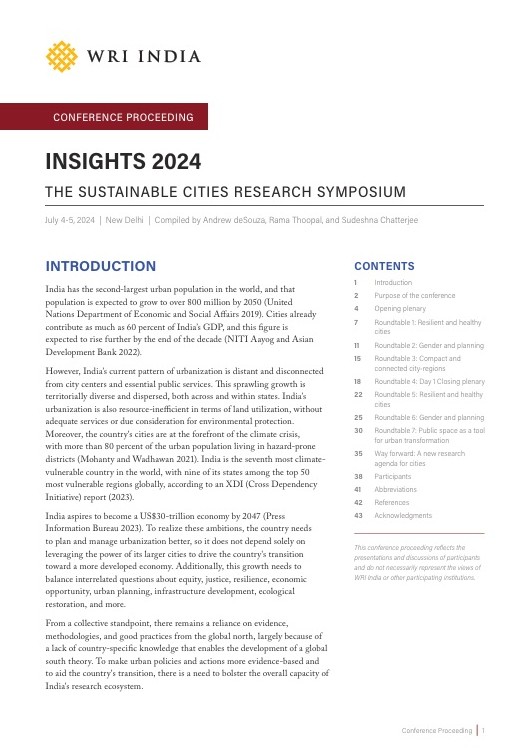Financing Agricultural Resilience the Bond Way
by e -
As Indian states gear up to revise their State Action Plans on Climate Change (SAPCCs) and take stock of the progress made so far, a pressing issue that looms ahead is how to mobilize the finance needed for implementing different mitigation and adaptation strategies. According to the Economic Survey of India, India faces a multi-billion-dollar gap of around USD 38 billion when it comes to the implementation of its National Adaptation Plan on Climate Change (NAPCC). With no fixed budget allocations or financing mechanisms in place, the task of preparing for a future highly vulnerable to climate change is difficult for the country, both at the national and sub-national levels.
Uneven Flow of Climate Finance
Following the recent growth of the renewable energy (RE) sector, India has entered the green bonds market. In 2015, YES Bank issued the first green bond in India, for financing renewable and clean energy projects for wind and solar. RE is the largest sector in terms of attracting climate finance in India, followed by low carbon transport and infrastructure. India’s green bond issuances amount to USD 10.2 billion in total since the first green bond was issued in 2015. Both the public and private sector have participated in the market, with RE attracting the major chunk of the use of proceeds.
However, investments to curb climate change have been delivered unevenly across sectors, themes and regions -- with most of it being skewed towards mitigation and low carbon initiatives, rather than enhancing the capacity of vulnerable people to adapt to climate change and build resilience. While the infrastructure and industry need a green overhaul, India’s green transition cannot come about without strengthening the agricultural sector.
Agriculture remains a critical arbiter in India’s economy and development, and is often the first to suffer the adverse impacts of climate and market vagaries. The sector supports nearly half the Indian population through direct and indirect employment. The Economic Survey of India 2018 estimated that climate change could lower farm incomes by 20-25 percent. The growth rate in the sector has plummeted to 2.7 percent from 6.3 percent since 2016. While a host of reforms are needed to unshackle productivity and incomes in the sector from market vagaries, investing in climate resilient activities is key to not only enhance food security, but also to secure the livelihoods of farmers and stabilising their incomes.
Innovative Means to Finance Climate Resilient Agriculture
There is a lot of potential for innovation and investment in the bonds market in India, and channelling finance towards resilience. A demonstration in mobilizing the capital markets for resilient agriculture is likely to unlock not only the much-needed investment, but also initiate policy and market initiatives that make a mindset change possible across government, financial institutions, sub-sovereign entities and farmers. Recognising this, World Resources Institute (WRI) and Climate Bonds Initiative (CBI) have come together to:
- Identify measures in agriculture and water management to reduce climate risk and vulnerability;
- Sensitize and build the capacities of a network of advocates and actors at the national and sub-national level, financial institutions and corporate off-takers of agricultural produce.
- Facilitate the delivery of a first Adaptation & Resilience (A&R) investment package. This exercise will be based on scientific A&R principles and criteria being set forth globally by CBI and WRI, along with technical and industry groups, and will be informed by the specifics of the local context.
Why resilience bonds?
Resilience bonds can be used to finance activities that build resilience and contribute to climate change adaptation. These lower risk instruments spread the impact of damage among the investors, while at the same time financing investments in infrastructure, farming practices, etc. that are able to withstand climate change.
Typically, governments are the insurers of last resort in case of a natural disaster and to fund both rescue and reconstruction measures. However, with natural disasters like floods, cyclones and storms increasing at a rapid pace across the globe, government resources are coming under mounting pressure to meet the needs of affected areas and populations. Instruments like resilience bonds are a good way to tap into the private sector. It opens up the possibility of sharing liability among a large pool of investors and thus, reduce the burden on public funds. The funds raised through a resilience bond would also contribute to adaptation activities and can help to protect against climate risk over time.
Based on the principles developed by CBI and WRI, the European Bank for Reconstruction and Development (EBRD) issued the world’s first dedicated climate resilient bond worth USD 700 million in September 2019. This saw a demand from approximately 40 investors in 15 countries, and the proceeds from the bond will be used towards climate resilient agriculture infrastructure and other business and commercial operations.
Building on this momentum, WRI and CBI hope to tap into the possibilities that bond financing offers for India’s highly vulnerable agriculture sector. Moreover, this would lay the building blocks for identifying new and innovative ways to finance efforts that will make agriculture more resilient to climate change. Only then, can we tackle the threats posed by climate change at scale and with the urgency required.
--
Parvathi Preethan is a Project Associate with the Climate Resilience Practice team at WRI India. Neha Kumar is the India Programme Manager for CBI.


